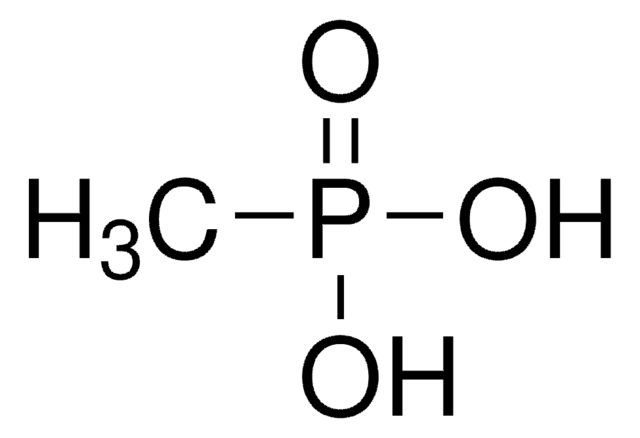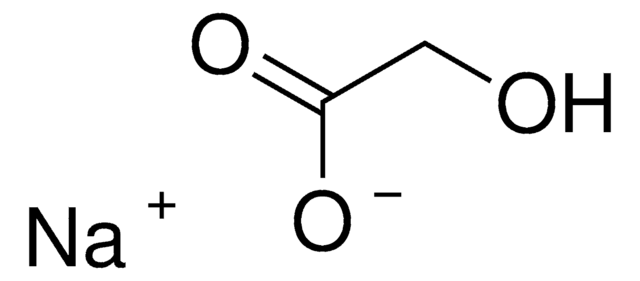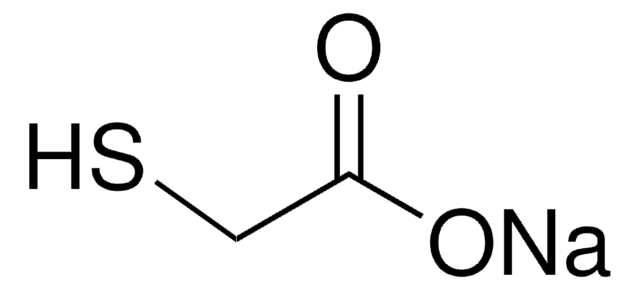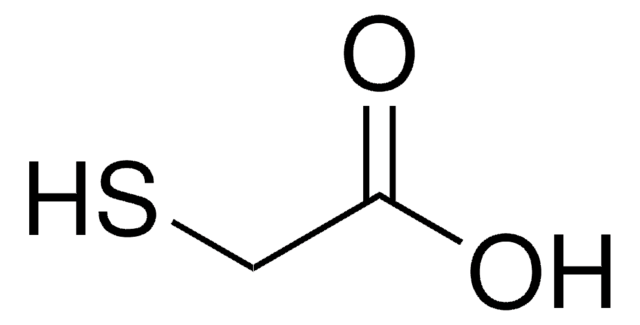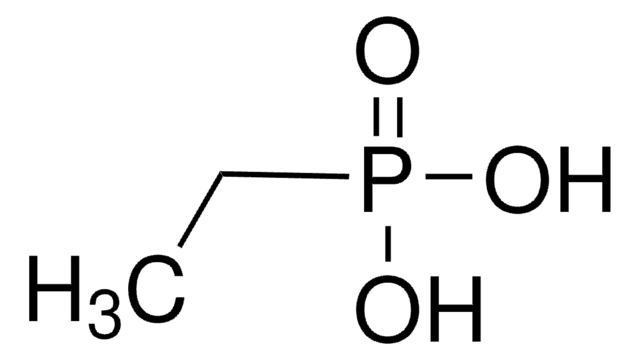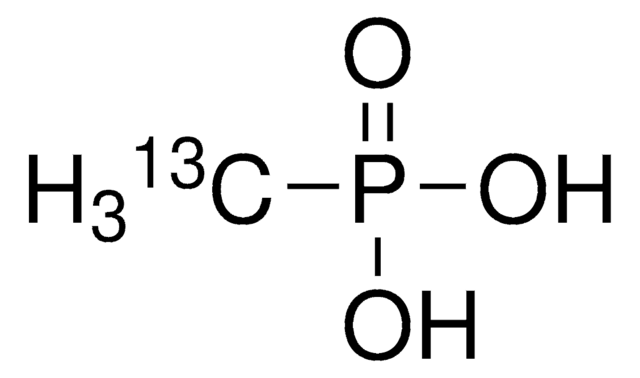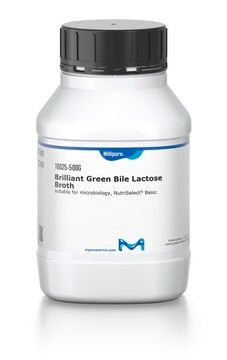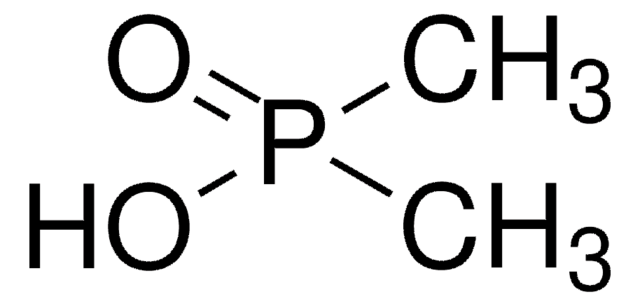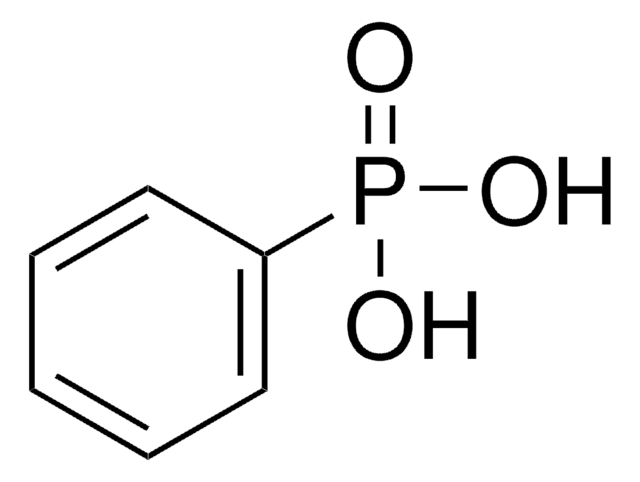91957
Monosodium methylphosphonate
99.0-101.0% (T)
Synonym(s):
Methanephosphonic acid monosodium salt, Methylphosphonic acid monosodium salt
About This Item
Recommended Products
Quality Level
Assay
99.0-101.0% (T)
form
crystals
concentration
18.5-20.5% Na
loss
≤2.0% loss on drying
pH
4.5-5.1
solubility
water: 3.54 g/30 mL, colorless
cation traces
Al: ≤5 mg/kg
Ba: ≤5 mg/kg
Bi: ≤5 mg/kg
Ca: ≤50 mg/kg
Cd: ≤5 mg/kg
Co: ≤5 mg/kg
Cr: ≤5 mg/kg
Cu: ≤5 mg/kg
Fe: ≤5 mg/kg
K: ≤50 mg/kg
Li: ≤5 mg/kg
Mg: ≤5 mg/kg
Mn: ≤5 mg/kg
Mo: ≤5 mg/kg
Ni: ≤5 mg/kg
Pb: ≤5 mg/kg
Sr: ≤5 mg/kg
Zn: ≤5 mg/kg
UV absorption
λ: 260 nm Amax: ≤0.2
λ: 280 nm Amax: ≤0.07
suitability
no residue for filter test
SMILES string
O=P(C)(O[Na])O
InChI
1S/CH5O3P.Na/c1-5(2,3)4;/h1H3,(H2,2,3,4);/q;+1/p-1
InChI key
CZVWTNTXBUVAFR-UHFFFAOYSA-M
Application
Signal Word
Danger
Hazard Statements
Precautionary Statements
Hazard Classifications
Acute Tox. 4 Oral - Eye Dam. 1 - Skin Corr. 1B
Storage Class Code
8A - Combustible corrosive hazardous materials
WGK
WGK 3
Flash Point(F)
Not applicable
Flash Point(C)
Not applicable
Certificates of Analysis (COA)
Search for Certificates of Analysis (COA) by entering the products Lot/Batch Number. Lot and Batch Numbers can be found on a product’s label following the words ‘Lot’ or ‘Batch’.
Already Own This Product?
Find documentation for the products that you have recently purchased in the Document Library.
Customers Also Viewed
Our team of scientists has experience in all areas of research including Life Science, Material Science, Chemical Synthesis, Chromatography, Analytical and many others.
Contact Technical Service